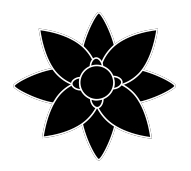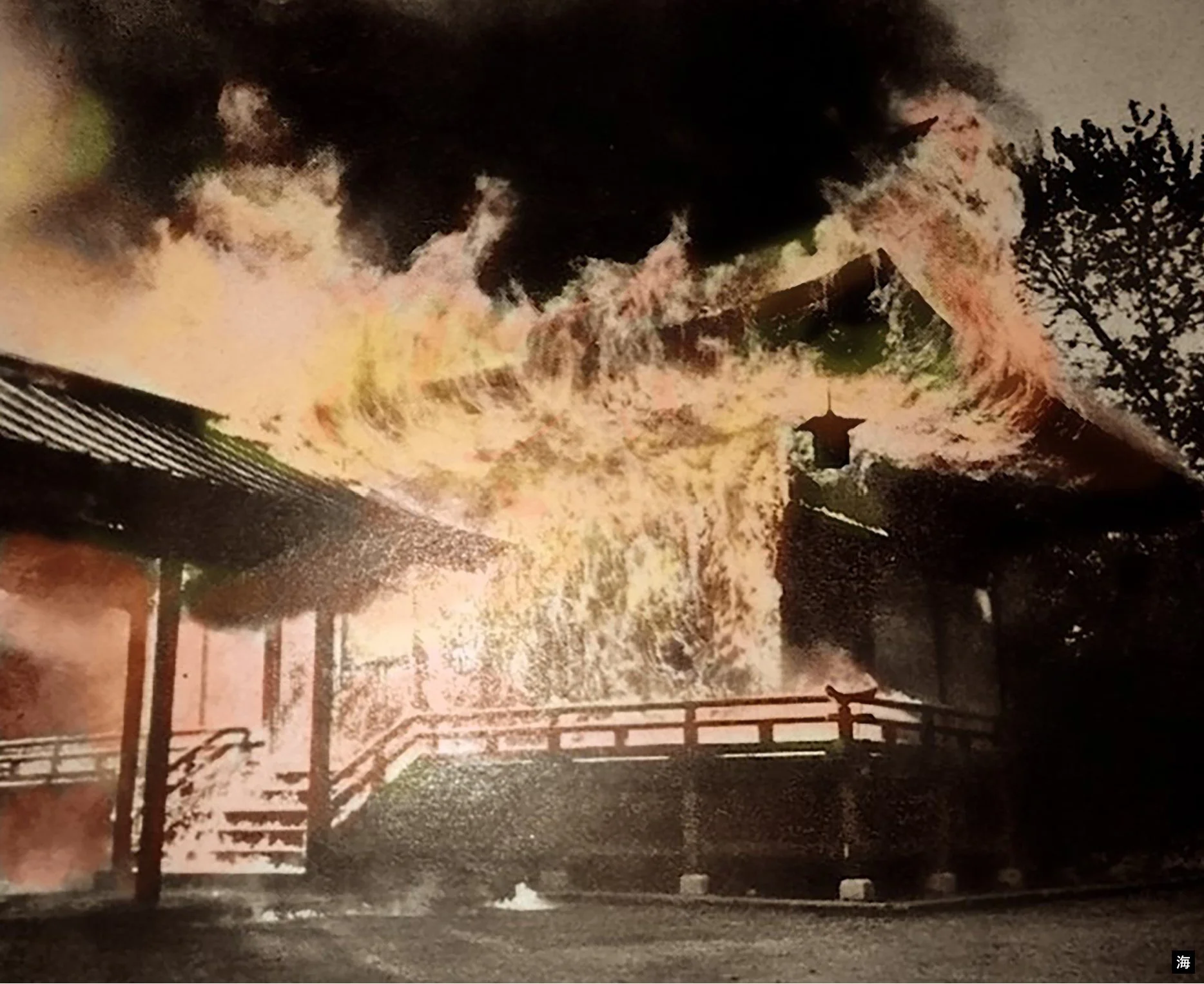SKYLANDING
SKYLANDING is installed on the Wooded Island in Jackson Park, Chicago and was dedicated by the artist on October 17, 2016.
In 1893, as Chicago hosted the World’s Columbian Exposition, Japan built a gift for the city that was both a pavilion and a philosophy. The Hō-ō-den, or Phoenix Pavilion, stood on the Wooded Island in Jackson Park, modeled after the 11th century Byōdō-in Temple in Uji. Its arched rooflines and tranquil setting embodied harmony between architecture and nature. For visitors who wandered its gardens, it offered not industry but spirit, not machinery but meaning.
For Okakura Kakuzō, the young scholar of art who helped shape Japan’s cultural presentation at the fair, the Phoenix Pavilion was more than an exhibition hall. It was a statement that Japan’s role in the modern world lay not only in factories and armies, but in aesthetics and philosophy. The phoenix, symbol of renewal, mirrored Japan’s own emergence from isolation into modernity.
For half a century, the pavilion remained in Chicago as a sign of Japan’s friendship. Yet history intruded. In 1946, during the bitterness of postwar occupation, the Phoenix Pavilion was destroyed in a fire, widely believed to have been arson. What had once symbolized cultural dialogue became a memory of loss. The Wooded Island grew silent, a scar where beauty had been.
Seventy years later, another artist offered the island a new gift. In 2016, Yoko Ono dedicated SKYLANDING on the very ground where the Phoenix Pavilion once stood. Twelve steel lotus petals rise in a circle, gleaming against the sky. Where fire had consumed the phoenix, now the lotus emerges from the soil—another ancient symbol of rebirth.
Ono described SKYLANDING as “a place where the sky comes down to land and heal the Earth.” It is at once memorial and invitation: a memorial to the pavilion lost in war’s shadow, and an invitation to imagine reconciliation and renewal. If the phoenix embodied rebirth through fire, the lotus embodies rebirth through mud—the slow, quiet resilience of life itself.
In this way, the Wooded Island holds a layered history. The Phoenix Pavilion announced Japan’s cultural spirit to America, shaped by Okakura’s vision of aesthetics as philosophy. Its fiery loss in 1946 marked the rupture of war. And SKYLANDING, rising in 2016, restores the dialogue as a gesture of peace. Together, they tell a story that bridges centuries: of destruction, renewal, and the enduring belief that art can heal where politics divide.
Chicago, in turn, holds this story within its own landscape. Visitors to Jackson Park walk not only among trees and gardens, but through echoes of Okakura’s philosophy and Ono’s vision. From phoenix to lotus, from ashes to steel petals, the site whispers the same lesson: beauty may be broken, but it can rise again.
OKAKURA KAKUZO AND THE ART CULTURAL DIPLOMACY
When Chicago hosted the 1893 World’s Columbian Exposition, it became a global stage where nations displayed their achievements in industry, science, and culture. For Japan, which was only a few decades into the transformative Meiji Restoration, the fair represented a pivotal opportunity to announce its emergence as a modern power while simultaneously showcasing the richness of its traditions. Central to Japan’s presence was the Hō-ō-den, or Phoenix Pavilion, a full-scale architectural replica inspired by the Byōdō-in Temple in Uji, Kyoto. This structure was not merely an exhibit; it was a carefully crafted statement of philosophy and identity, shaped in large part by the visionary art scholar and cultural thinker Okakura Kakuzō.
The Phoenix Pavilion: Design, Symbolism, and Experience
The Phoenix Pavilion was constructed on Wooded Island in Jackson Park, meticulously modeled after the 11th-century Byōdō-in’s Phoenix Hall. Its curved rooflines, delicate ornamentation, and tranquil lakeside setting were designed to evoke a sense of harmony between architecture, landscape, and spirituality. The choice of the phoenix (hō-ō) as the pavilion’s symbol was deliberate and profound. In Japanese culture, the phoenix represents rebirth and renewal, which served as a fitting metaphor for a nation emerging from centuries of isolation and asserting itself as both modern and deeply rooted in cultural heritage.
Visitors to the Phoenix Pavilion encountered more than an industrial or technological display. Instead, they were immersed in a cultural environment that included architecture, gardens, and art, all carefully curated to communicate refinement and aesthetic philosophy. The experience was intended to move beyond spectacle, inviting guests to engage with the underlying principles of Japanese beauty and thought.
Okakura Kakuzō’s Vision and Influence
While architects and craftsmen brought the Phoenix Pavilion to life, it was Okakura Kakuzō who shaped its cultural interpretation and significance. Working alongside reformers such as Ernest Fenollosa, Okakura advocated for a strategy that emphasized Japan’s artistic soul rather than simply presenting commodities or curiosities. He conceptualized the Phoenix Pavilion as more than a building; it was a manifesto of Japanese aesthetics, embodying values such as balance, imperfection, and harmony with nature.
Okakura’s fluency in English and familiarity with Western philosophy enabled him to serve as a bridge between Japan and the international audience. He explained Japanese art and culture in ways that resonated with Western sensibilities, planting the seeds for the later Western appreciation of Zen, wabi-sabi, and the tea ceremony. Through his efforts, the Phoenix Pavilion became a platform for cultural exchange and understanding, rather than a mere display of exoticism.
Significance and Lasting Impact
The Phoenix Pavilion marked one of Japan’s earliest and most significant acts of cultural diplomacy in America. It foreshadowed themes that Okakura would later develop in his influential work, The Book of Tea—such as the spiritual dignity of art, the beauty of imperfection, and Japan’s role as a custodian of Asia’s cultural heritage. The site of the pavilion eventually became the Garden of the Phoenix in Jackson Park, serving as a lasting reminder of Japan’s presence at the fair and of Okakura’s vision.
FROM DESTRUCTION TO RENEWAL THROUGH YOKO ONO’S SKYLANDING
The Hō-ō-den, or Phoenix Pavilion, was Japan’s remarkable gift to the 1893 World’s Columbian Exposition in Chicago. For more than half a century, it stood gracefully on the Wooded Island in Jackson Park, embodying Japan’s message of rebirth, cultural refinement, and international friendship. After the exposition, the pavilion remained as a lasting symbol of the bond between Japan and the United States, a physical testament to the spirit of cross-cultural exchange and goodwill.
However, the fate of the Phoenix Pavilion took a tragic turn in 1946. In the fraught aftermath of World War II, the pavilion was destroyed by an act of arson. This loss was more than the destruction of a building; it became a powerful symbol of the rupture in trust and the devastation wrought by wartime animosities. For decades, only fragments and memories of the pavilion lingered, a poignant reminder of what had been lost. It was not until the late twentieth century that Japanese and Chicagoan partners began to restore the site, transforming it into a garden and rekindling the spirit of friendship and renewal.
Art as Rebirth and Reconciliation
In 2016, the story of the Phoenix Pavilion took a new turn with the dedication of SKYLANDING, a public artwork by renowned artist Yoko Ono, installed precisely where the pavilion once stood. SKYLANDING consists of twelve towering lotus petals crafted from stainless steel, arranged in a circular formation that seems to emerge organically from the earth. The lotus, a potent symbol of rebirth in both Buddhist and Japanese traditions, rises pure and radiant from the mud. This mirrors the way SKYLANDING rises from the ashes of the Phoenix Pavilion.
Ono described SKYLANDING as a place “where the sky comes down to land and heal the Earth,” inviting visitors to reflect, heal, and seek reconciliation. The installation is not only Chicago’s first permanent public artwork by Yoko Ono, but also a deeply intentional “healing gift” to the city and to the ongoing relationship between Japan and the United States. Its creation was made possible through collaboration among the City of Chicago and civic groups dedicated to preserving Japanese cultural heritage.
From Loss to Renewal: The Symbolic Continuity of the Wooded Island
SKYLANDING explicitly links the past and present, serving as a direct response to the destruction of the Phoenix Pavilion and as a gesture of peace and rebirth. The symbolism of the site is profound: the phoenix, representing rebirth through fire, and the lotus, symbolizing rebirth through mud, are now layered in the same space. The fire that consumed the Phoenix Pavilion in 1946 is answered by the lotus petals of SKYLANDING rising in 2016, creating a dialogue between loss and renewal.
Just as Okakura Kakuzō once used the Phoenix Pavilion to present Japan’s spirit to the world, Yoko Ono uses SKYLANDING to convey a message of peace, healing, and shared humanity. From its conception, her intention was to invite visitors to walk into the lotus’s center, look within, and recognize that peace and harmony begin in each of us.
Drawing inspiration from the site’s layered history and from Amida Buddha, for whom the Byōdō-in in Uji was built and after which the Hō-ō-den was modeled, she extends that inward awakening into outward expression. In doing so, she preserves the continuity of Wooded Island’s story, from Japan’s 1893 gift, through wartime loss, to a new era of reconciliation and renewal in the twenty-first century.
In essence, SKYLANDING stands as Yoko Ono’s living monument of rebirth and serves as a twenty-first-century echo of the Phoenix Pavilion. Where flames once consumed a cultural gift, lotus petals now rise as enduring symbols of peace, resilience, and the ongoing dialogue between Japan and the United States. Through art and memory, the site continues to inspire reflection on the power of cultural exchange and the possibility of healing after loss.










